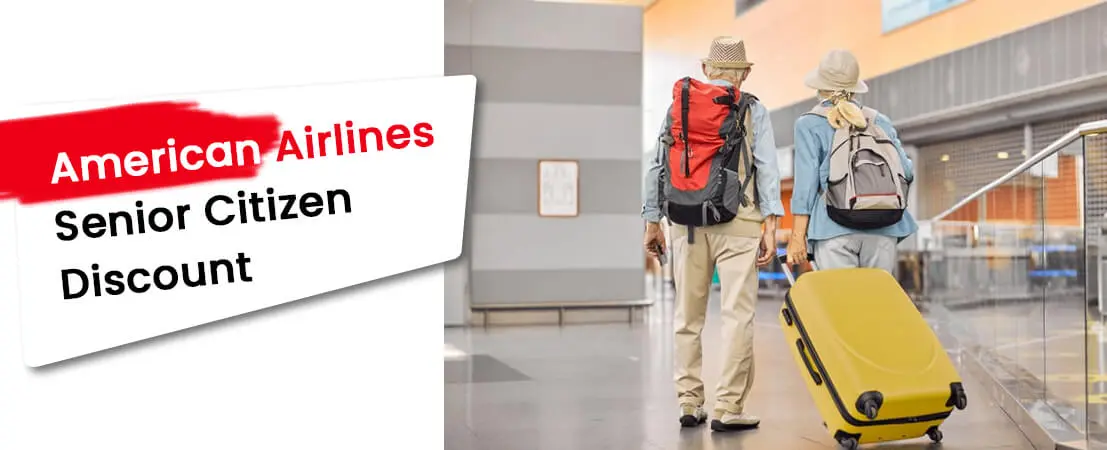Discount airfares for seniors open up a world of travel possibilities for older adults, allowing them to explore new destinations and reconnect with loved ones. This guide delves into the intricacies of securing affordable air travel for seniors, examining airline policies, booking strategies, and essential travel considerations. We’ll explore various options to help you plan your next adventure with ease and confidence.
From understanding eligibility criteria for senior discounts to comparing different airlines and travel insurance options, we’ll equip you with the knowledge needed to navigate the process effectively. We’ll also consider alternative travel methods, such as trains and buses, to help you make informed decisions based on your specific needs and preferences.
Defining the Target Audience
Understanding the typical senior traveler seeking discounted airfares is crucial for effective marketing and service provision. This demographic presents unique travel patterns and priorities, influenced by factors beyond simple cost considerations. Their needs and preferences require a tailored approach to ensure successful engagement.
This section will detail the characteristics of the target audience, focusing on their demographics, travel preferences, and the elements driving their airline and travel date selections.
Senior Traveler Demographics
The typical senior traveler interested in discounted airfares is generally aged 65 and above, though the precise age range can vary depending on the specific airline’s program and definition of “senior.” This group often comprises individuals who are retired or semi-retired, possessing a higher degree of flexibility in their travel schedules compared to working-age individuals. They may be traveling alone, as couples, or in small groups with family or friends. Financially, while seeking discounts, they are not necessarily budget-constrained, but are conscious of value and seek to maximize their travel budget. A significant portion of this demographic may also have pre-existing health conditions, influencing their travel choices and requiring considerations for accessible travel options.
Travel Preferences of Senior Travelers
Senior travelers often prioritize comfort and convenience over speed or the absolute lowest price. They may prefer non-stop flights to minimize travel time and potential disruptions. Shorter trips are more common, focusing on specific destinations or activities rather than extensive itineraries. Destinations are frequently chosen based on accessibility, climate, and proximity to family or friends. For example, cruises, which often bundle travel and accommodation, are popular options, as are destinations with readily available accessible transportation and accommodations. The focus is frequently on relaxation and enjoying leisure activities rather than adventure tourism.
Factors Influencing Airline and Travel Date Selection
Several key factors influence the choice of airlines and travel dates for senior travelers seeking discounts. Price is a significant consideration, but not the sole determinant. Reputation and reliability of the airline are also important; a history of on-time performance and positive customer service reviews hold significant weight. The availability of senior-specific discounts and loyalty programs plays a vital role. Many seniors value the accumulation of frequent flyer miles or points to offset future travel costs. Finally, travel dates are often chosen based on weather conditions at the destination, avoiding peak seasons to secure lower fares and fewer crowds. For example, a senior traveler planning a trip to Florida might avoid the peak winter months, opting for a shoulder season like spring or fall for more favorable weather and potentially lower airfares.
Travel Insurance and Considerations
Securing appropriate travel insurance is paramount for senior travelers, offering a crucial safety net against unforeseen circumstances that can significantly impact their trip and well-being. The added complexities and potential health concerns associated with aging necessitate a more comprehensive insurance plan than might be required for younger individuals.
The unique needs of senior travelers often require specific insurance provisions. Standard travel insurance policies may not adequately address the increased likelihood of medical emergencies or the potential for pre-existing conditions to be exacerbated during travel. Therefore, it’s vital to carefully review policy details and ensure sufficient coverage is in place.
Medical Coverage for Seniors
Medical emergencies can be particularly costly, especially in foreign countries. Comprehensive travel insurance for seniors should include substantial medical expense coverage, ideally encompassing emergency medical evacuation, hospitalization, and doctor visits. Policies should clearly outline the extent of coverage for pre-existing conditions, as many standard policies may exclude or limit coverage for these. Consider policies that offer direct billing to hospitals, minimizing out-of-pocket expenses during a crisis. For example, a policy with a minimum of $500,000 in medical coverage and explicit coverage for pre-existing conditions (with any necessary limitations clearly stated) would be a prudent choice for many seniors.
Trip Cancellation and Interruption Protection
Trip cancellation or interruption insurance protects against financial losses incurred if a trip must be cut short or abandoned entirely due to unforeseen circumstances, such as a sudden illness, severe weather, or family emergency. This is particularly important for seniors, whose travel plans may be more susceptible to disruption due to health concerns. A comprehensive policy should reimburse for non-refundable deposits, airfare, accommodation, and other prepaid expenses. Consider the specific limitations and exclusions within each policy to ensure it adequately covers your potential scenarios. For instance, a policy that covers cancellations due to a sudden illness of the insured or a close family member would be beneficial.
Essential Considerations for Senior Air Travel Planning
Planning ahead is essential for a smooth and enjoyable trip. Careful consideration of the following points will greatly enhance the travel experience for senior citizens.
- Pre-flight Medical Consultation: Consult your physician well in advance of your trip to discuss any potential health concerns and obtain necessary medical clearances or prescriptions. This proactive step minimizes potential complications during travel.
- Medication Management: Pack all necessary medications in their original containers, along with a copy of your prescriptions. Carry sufficient medication for the entire trip, plus a few extra days’ worth, in case of delays.
- Comfortable Travel Attire: Choose loose, comfortable clothing and footwear to ensure maximum comfort during the flight and minimize potential discomfort or health issues related to prolonged sitting.
- Mobility Assistance: If you have mobility limitations, arrange for assistance with boarding and disembarking the aircraft in advance with the airline. Consider using a wheelchair or other mobility aids as needed.
- Emergency Contact Information: Keep a readily accessible list of emergency contact information, including family members, doctors, and the insurance provider. Share this information with a trusted travel companion.
- Travel Documents: Make copies of all important travel documents, including passports, visas, tickets, and insurance policies. Store these copies separately from the originals.
Illustrative Examples
This section provides concrete examples to illustrate the concepts discussed earlier, focusing on the senior travel experience, website design, and tailored insurance policies. These examples aim to clarify the practical application of senior-focused travel strategies.
A Hypothetical Senior Traveler’s Journey
Consider Mrs. Eleanor Vance, a 72-year-old retired teacher planning a trip to visit her grandchildren in Florida. She begins her search for discounted airfares on a senior-friendly website (detailed below). Initially, she struggles to navigate the complex date selection tool, finding the small font size difficult to read. However, she discovers a helpful “large print” option, making the process much smoother. During the booking process, she encounters an issue with the online payment system. After contacting customer service via a clearly labeled phone number (prominently displayed on the website), she receives immediate and patient assistance resolving the problem. Upon arrival in Florida, she unfortunately experiences a minor medical emergency. Her pre-purchased travel insurance (detailed below) covers the medical expenses, alleviating significant financial stress. Her overall experience, while initially challenging in some aspects, was ultimately positive due to the accessibility features of the website and the comprehensive nature of her travel insurance.
Senior-Friendly Airline Website Design
A senior-friendly airline website would prioritize clear, concise information and effortless navigation. The color palette would employ high contrast between text and background, avoiding visually jarring combinations. For example, a dark navy blue background with light beige or cream-colored text would provide excellent readability. Font sizes would be significantly larger than standard websites, perhaps using a minimum of 16 points for body text and even larger for headings. Navigation would be intuitive, with large, clearly labeled buttons and menus. Important information, such as baggage allowances, cancellation policies, and contact details, would be easily accessible on the homepage or via prominently placed links. The layout would be uncluttered, avoiding excessive graphics or animations that could be distracting or difficult for older users to process. The website would be fully accessible, adhering to WCAG (Web Content Accessibility Guidelines) standards, ensuring usability for individuals with disabilities.
Example of a Senior-Tailored Travel Insurance Policy
A travel insurance policy designed for senior travelers might offer higher coverage limits for medical emergencies, recognizing the increased risk associated with age. For instance, it could provide up to $500,000 in medical expense coverage, compared to a standard policy’s $100,000. It would also include coverage for pre-existing conditions, subject to certain limitations and declarations. The policy could cover trip cancellations due to illness, offering reimbursement for non-refundable expenses. However, exclusions might include adventure sports or high-risk activities not typically undertaken by seniors. The policy might also include coverage for lost or stolen luggage, with higher limits than standard policies, recognizing the potential value of items seniors might carry. A 24/7 emergency assistance hotline, accessible via phone and online chat, would provide immediate support in case of unforeseen circumstances. The policy documentation would be written in clear, simple language, avoiding jargon and complex legal terms.
Concluding Remarks
Planning a trip as a senior doesn’t have to be daunting. By understanding airline policies, utilizing smart booking strategies, and prioritizing travel insurance, you can secure affordable and comfortable air travel. Remember to compare options, consider alternative transportation, and prioritize your safety and well-being throughout your journey. With careful planning, your next adventure awaits!




